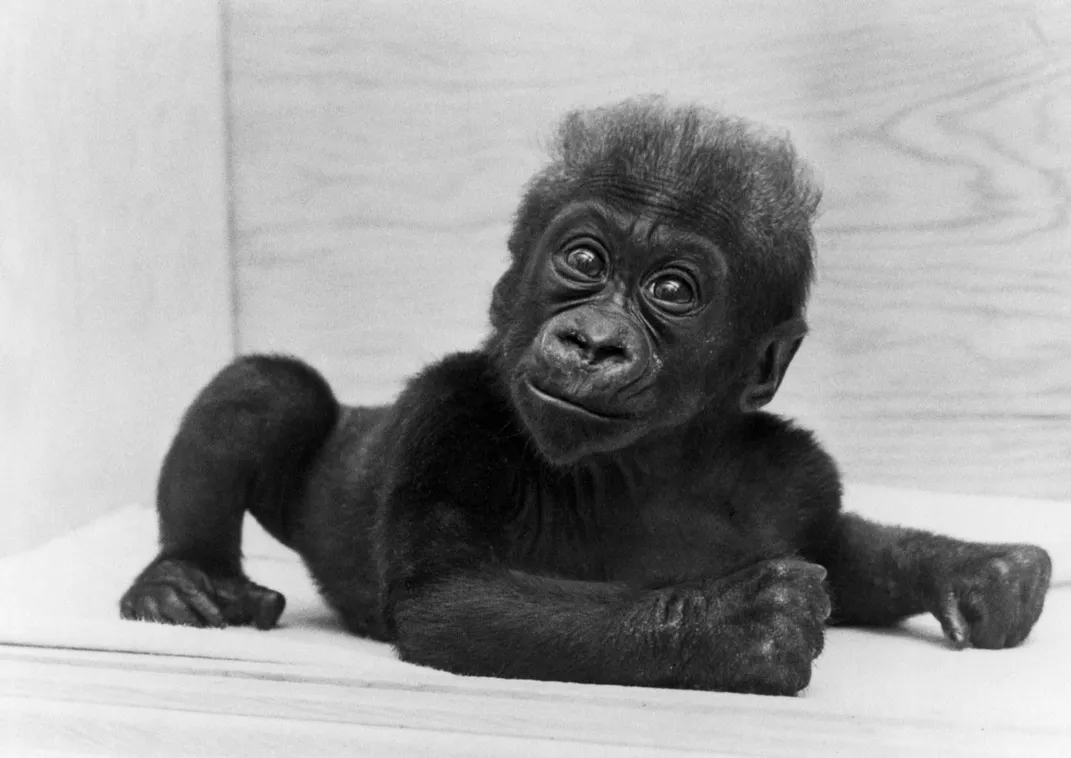Colo, the World’s First Gorilla Born in Captivity, Is Dead
The miracle baby turned matriarch was 60 years old
/https://tf-cmsv2-smithsonianmag-media.s3.amazonaws.com/filer/ad/bc/adbc0207-0b9b-42b1-a08a-18a8e046dbd0/16113302_10154342039882106_3573041689328821538_o.jpeg)
Sixty years ago, a tiny gorilla made its debut at the Columbus Zoo in Ohio. Her name was Colo, and she wasn’t just any primate: She was the first ever to be born in captivity. The adorable baby grew into a formidable matriarch, but now the animal who captured the imagination of conservationists and charmed the American public is no more. As the Associated Press reports, Colo is dead.
At one time, Colo was the world’s most famous animal celebrity, and her birth made headlines around the world. And though the beginning of Colo’s life was noteworthy, it wasn’t supposed to happen in the first place. A part-time zookeeper and veterinary student at the Columbus Zoo decided to let two gorillas, Baron (Macombo) and Millie (Christina), hang out together without permission. They ended up mating and Millie became pregnant. Then one day, the zookeeper, Warren Thomas, saw something on the floor of Millie’s cage. It was an amniotic sac with a nearly dead baby gorilla inside. Thomas gave the baby mouth-to-mouth and Colo miraculously survived.
Colo, whose name was a clever mash-up of Columbus and Ohio, became an instant celebrity. She also ushered in change in gorilla conservation. At the time, zookeepers thought nothing of brutally capturing gorillas for the sake of their zoos. A 1951 article in LIFE—published just five years before Colo’s birth—describes the way gorillas used to be captured in the wild.
“Gorillas are valuable animals,” the article states. “Only young gorillas can be caught alive and raised in captivity. But capturing even young gorillas is a bloody and terribly dangerous business. The young ones always live with adults which fight fiercely to protect their families, so [their captors are] often forced to kill all the adult gorillas on the chance of capturing one or two marketable young ones.”

Zookeepers also weren’t sure whether baby gorillas could be born or raised in captivity at all. Colo’s life became a kind of grand experiment—and proof that zookeepers had been doing it wrong. As Jeffrey Little, who wrote a book about Colo and her offspring, notes in a 2008 interview, zookeepers didn’t even know how long females stayed pregnant when Colo was born. They also didn’t realize that young gorillas captured in the wild don’t have a chance to pick up parenting skills, and so the zoo had to fill in for Colo’s indifferent mom.
Colo herself became a mother several times over. As the AP reports, she had three children, 16 grandchildren, 12 great-grandchildren, and three great-great grandchildren. As she grew and developed, so did the study of gorillas and modern-day philosophies of zookeeping. Today, zoos try to create habitats for captive animals that mirror the wild, and let gorillas raise their own young instead of babying them like they did Colo. The question of whether to raise gorillas in captivity at all is still a controversial one—especially because just as gorillas born in the wild can’t raise their children in captivity, gorillas born in captivity don’t have the skills they need to live in the wild.
In the end, Colo’s death was much more peaceful than her birth. In a release, the Columbus Zoo and Aquarium notes that she died in her sleep. Colo recently had a malignant tumor removed, but it won’t be certain whether she died of cancer until the zoo conducts an animal autopsy, or necropsy. After the necropsy is complete, says the zoo, she’ll be cremated “and her ashes buried at an undisclosed location at the Columbus Zoo.” Colo the miracle gorilla lived 20 years longer than anyone expected and she will continue to live on in her many contributions to conservation.
/https://tf-cmsv2-smithsonianmag-media.s3.amazonaws.com/accounts/headshot/erin.png)
/https://tf-cmsv2-smithsonianmag-media.s3.amazonaws.com/accounts/headshot/erin.png)